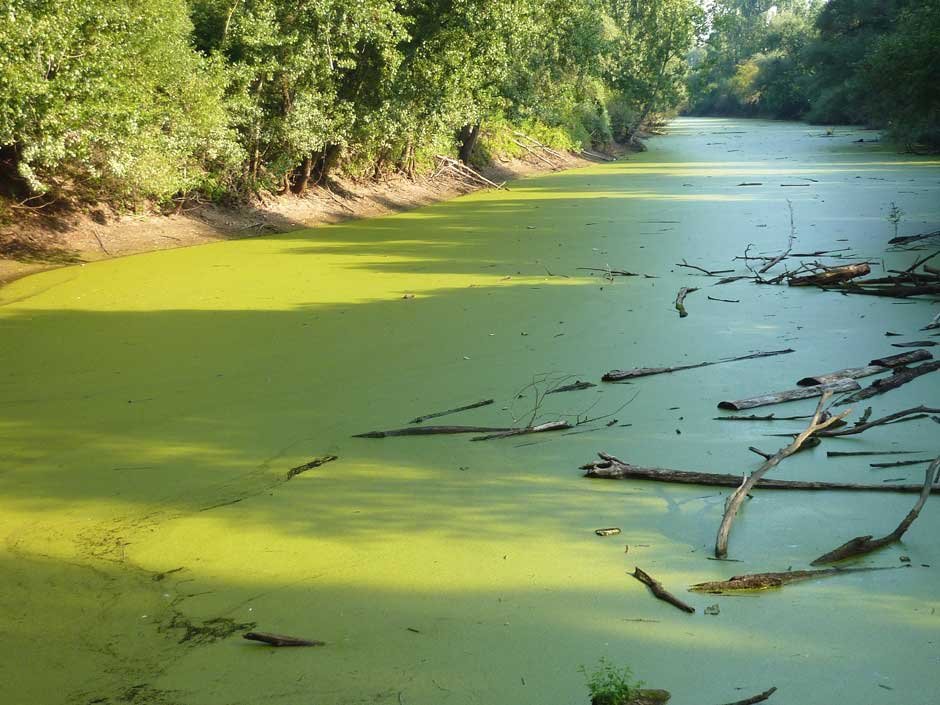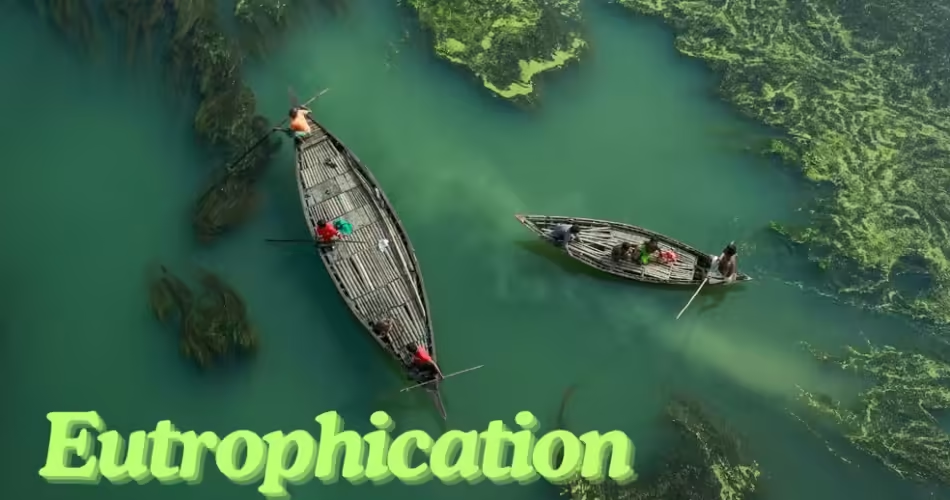This blog contains information about Eutrophication. First it defines and explains the phenomenon of Eutrophication in detail. Then it explains the Steps of Eutrophication. After that, it mentions the main Causes of Eutrophication. Then it elaborates the difference between Oligotrophy and Eutrophication in detail. It also explains the Effects of Eutrophication and in the end, it mentions the Preventive Measures. This blog contains Oligotrophy, and Causes and Effects of Eutrophication.
Definition of Eutrophication:
Eutrophication is a general term describing the process of accumulation of nutrients in a body of water. It results in increasing growth of microorganisms that may deplete the water of oxygen.
This phenomenon occurs when the environment becomes enriched with nutrients increasing the amount of algae growth to estuaries and coastal waters. It also increase the concentration of microphytes.
Eutrophication is a threat to potable drinking water, water resources, fisheries and recreational water bodies. It is a natural process driven by excess of nutrients in water.
This is a gradual process of accumulating nutrients in some sections of the water body or in the whole water body. It varies according to the amounts of nutrients and their extent.
Steps of Eutrophication:
There are four steps of eutrophication according to their extent and effects:
Nutrients Enrichment:
The first steps starts because of nutrient enrichment. This can be because of addition of agricultural run-off or any disposal containing nutrients in large amounts. This makes a water body so rich in excessive nutrients and the water become viscous with nutrients.
Algal Bloom:
After the nutrient enrichment, there is rapid increase in growth of algae and other planktons that results in the formation of algal bloom. This makes the effect visible so as this algal bloom sets at the surface of water blocking sunlight and other environmental benefits to enter into the water.
Oxygen Depletion:
When these algal blooms blocks the sunlight, there is severe oxygen depletion in the water. It is now not able to drink and unsuitable for aquatic life to live and develop. Depletion of oxygen cause the aquatic life to migrate or die because their survival is very difficult in such conditions.
Death of Aquatic Species:
When the oxygen becomes depleted, It is difficult for aquatic species to live in that environment. If the algal bloom is left untreated and algae is not removed, aquatic species die with exponential rates. The lakes or ponds containing algal bloom are mostly emptied by Biodiversity because of oxygen depletion.
These were the steps of Eutrophication.
Causes of Eutrophication:
Following are the causes of eutrophication:
Nitrate and Phosphate runoff:
The most important cause of Eutrophication is Nitrate and Phosphate runoff from farmlands. This is because we use Nitrogen-rich and Phosphorus contains fertilizers in the farmlands. The animal feces also contains phosphate in a high concentrations. The water that is used for irrigation purposes, takes these salts through runoff and eventually ends into the lakes and rivers. This cause excess of nutrients and leads to Eutrophication.
Effluents of aquaculture ponds:
Aquaculture is a system that is created for raising and harvesting fish, shellfish and aquatic plants. This system runs on some chemical compounds, salts and nutrients for better growth and productivity. When its run off or contact with groundwater adds into a water body, there is excess of nutrients present in the water body that leads to Eutrophication.
Municipal and Industrial Discharge
Municipal Discharge is relating to town, cities or local government. While industrial discharge is the wastewater or gas emissions from the industries. Both of them contains bulk amounts of salts, nutrients and chemicals. When this discharge adds to the water bodies, excessive concentrations of nutrients takes place and ends up as Eutrophication.
These are the main causes of Eutrophication.

Oligotrophic vs Eutrophic Environments:
Oligotrophic
- These environments are not able to sustain life.
- These environments have low level of nutrients.
- They offer slow growth and low level of metabolism.
- These generate low population density.
- This condition have very clear water.
- BOD is very low.
- There is no odor in oligotrophic lakes due to less decomposition rate.
- Water is cold, colorless, with more dissolved oxygen.
- There is a high penetration of Sunlight.
Vs
Eutrophic
- These environment are able to sustain life excessively.
- These environments have high levels of nutrients.
- They offer rapid growth and high level of metabolism.
- These generate high population density.
- The eutrophic environment will never have clear water because of algal bloom.
- BOD is very high.
- There is a specific odor because of high decomposition activity rate.
- Water is hot muddy and mostly green in color.
- Lowest penetration of Sunlight.
These are the differences between Oligotrophic and Eutrophic Environments in Water.
Effects of Eutrophication:
Following are the effects of Eutrophication:
Effects on Human Health:
These algal blooms are major ecological health risk for humans. These accumulations or algal bloom release toxic substances and poisons in the water. When this water is utilized by humans and animals they cause many harmful health conditions and can be fatal. This water gets mixed with poisonous substances and cause harmful diseases in humans and animals.
Effects on Aquatic Life:
Eutrophication forms a layer of algal bloom on the surface of water and it cause darkness in the water. This algal bloom stops the sunlight to reach into the water and lowers the oxygen levels of the water body. In the start the aquatic species feel suffocation and then eventually eutrophication cause their death. In this way eutrophication does not support aquatic life.
Effects on Water Quality:
Eutrophication highly deteriorate the water quality of the water bodies. The main effect in the lowering of oxygen in the water. This a dangerous for humans, animals, aquatic life and water quality at the same time. Another drawback is that, it kills the seagrasses and other aquatic plants because of changing the composition. After eutrophication, the water is not drinkable for humans and animals. Because it adds harmful toxins in the water and may cause harmful health conditions.
Preventive Measures for Eutrophication:
- Efficient filter ecosystems for the removal of nitrogen and phosphorus from runoff water.
- Prevent the municipal and industrial waste discharge.
- Apply sewage treatment to remove excessive nutrients.
- Remove the algal bloom at specific intervals to avoid worst cases.
- The reduction of pollution will automatically reduce Eutrophication.
This blog contains Causes, Effects, Prevention and Oligotrophy vs Eutrophication.

To learn about more topics, Click the links below:


Comments